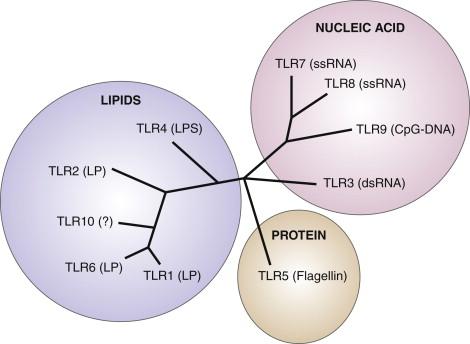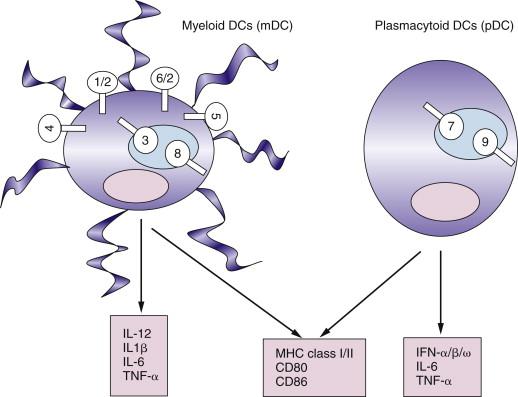Physical Address
304 North Cardinal St.
Dorchester Center, MA 02124
Key features of the immune system are its abilities to distinguish self from nonself, to recognize and respond to a myriad of foreign molecules (antigens) with exquisite specificity, to remember previously encountered antigens and quickly mobilize an expanded response, and to scan the entire body continuously for antigens. These properties make the immune system ideal for defending the host against developing and recurrent cancers and nascent metastatic tumor deposits, at least in theory. In spite of its promise, however, the application of immunological approaches to the cancer problem has only recently started to yield the dramatic results long anticipated by immunologists. The major obstacle to using the immune system and its various components to prevent or treat human cancer has been a lack of understanding of the fundamental mechanisms that govern the immune response. These include the mechanisms by which cells of the immune system recognize antigens, expand and differentiate, find and destroy aberrant cells and pathogens, and die or become quiescent when no longer needed. The inability to direct these processes toward the destruction of cancer cells in the body in a consistent and effective way has thwarted many attempts at cancer immunotherapy to date. However, there are now a number of clear instances in which immunological approaches have brought significant benefit to cancer patients. This progress sustains the belief that the immune system has much to offer in controlling cancer, if only we could better control and direct its destructive powers.
Very recently, major advances have been made in understanding how cells of the immune system become activated on encountering an antigen and how they communicate with their external environment and with each other. Some of these advances are a direct result of the Human Genome Project, which has enabled the discovery of previously unknown genes coding for families of cytokines and receptors involved in regulating inflammatory and immune responses. Others are derived from insights gleaned from studies of how the immune system defends the host against microbial pathogens. The normal host has various mechanisms that help rid it of invading pathogens. Collectively, these mechanisms are called innate or natural immunity, and they require no previous contact with the pathogen to become active. Acquired immunity, on the other hand, is an immune response triggered by an encounter with a foreign cell or molecule and involves an amplification process that increases the number of lymphocytes able to recognize and respond to an invader. Until recently, the means by which innate immune mechanisms distinguish pathogens from self were unknown. A number of studies have demonstrated that the innate immune system recognizes many lethal microbial pathogens by means of pattern recognition receptors (Toll-like receptors, TLRs) on antigen-presenting cells (APCs). These receptors recognize common molecular patterns shared among bacteria or viruses but not present on normal or cancerous host cells, such as lipoprotein, peptidoglycan, lipopolysaccharide, lipoteichoic acid, bacterial DNA, and viral double-stranded RNA. The triggering of pattern recognition receptors by such molecules has three important effects on the APCs of the immune system: (1) expression of stable and high levels of pathogen-derived peptide-MHC complexes on the cell surface, which will trigger T-cell responses; (2) expression of high levels of co-stimulatory molecules such as CD80 and CD86 that prime and activate antigen-specific T cells; and (3) secretion of a large number of proinflammatory cytokines, such as interleukin 1 (IL-1), IL-6, IL-12, TNF-α, GM-CSF, and type 1 interferon. The proinflammatory cytokines further activate APCs, directly activate the innate killer cells of the immune system (NK cells and macrophages), and promote T-cell differentiation into antigen-specific helper T cells or cytotoxic T cells that mediate acquired immunity. These new findings explain the mechanism of action of bacterial adjuvants, which have long been used in animal models to enhance immunization toward protein and peptide antigens. They also suggest that the relative inefficiency of immunization with tumor antigens may be due, in part, to failure of the vaccines to stimulate the innate arm of the immune system, which is required for maximal amplification of antigen-specific, T-cell–mediated (acquired) immune responses. Thus, developing approaches to trigger innate immunity in concert with more traditional approaches to stimulate acquired immunity represents a promising new strategy for cancer immunotherapy.
Other important advances concern the biology and activities of dendritic cells (DCs). These are a heterogeneous group of cells involved in antigen detection, capture, processing, and presentation to T cells. DCs are the major cell type expressing germline-encoded immunoreceptors (TLRs, C-type lectin-like receptors, Ig-like molecules), and they are at the forefront of host defense mechanisms against microbial pathogens and altered self-molecules, such as those as encountered in virus-infected cells and autoimmune and antitumor responses.
An essential role of our immune system is to sense and protect us from infection by pathogenic microorganisms and establish tolerance to self-antigens. One of the most important mechanisms that the immune system distinguishes “infectious non-self” from “self” is the development of recognition of pathogen-associated molecular patterns (PAMPs). This PAMPs recognition system was first identified in Drosophila as Toll, an essential molecule for embryonic patterning, as well as for antifungal immunity. The first mammalian homologue of Toll was identified as Toll-like receptor 4 (TLR-4), which was shown to recognize lipopolysaccharides (LPS) from gram-negative bacteria. Signaling TLR-4 triggers APCs to upregulate MHC class I/class II molecules and co-stimulatory molecules, as well as secrete proinflammatory cytokines, and therefore enable DCs to activate T-cell–mediated adaptive immune responses. To date, 10 TLR family members have been found in humans and 12 TLR family members in mice, which recognize the pathogen-associated molecular patterns, including proteins, lipids, and nucleic acids.
TLRs are type 1 transmembrane proteins. The extracellular portion of TLRs contains the leucine-rich repeats, which are essential for ligand binding. The intracellular portion shares a common structure with IL-1 receptor, called the Toll/IL-1 receptor homologous (TIR) domain, which is critical for signal transduction. The TLR genes are dispersed throughout the genome, with TLR1 and TLR6 genes on chromosome 4p14, TLR2 and TLR3 on 4q3.3-q35, TLR4 on 9q32-q33, TLR5 on 1q33.3-q42, TLR7 and TLR8 on Xq22, and TLR9 on 3q21.3.
Phylogenetic analyses of the amino acid sequence and structure of TLRs, in combination with analyses of TLR ligand binding, suggest that TLRs evolved along three major pathways ( Figure 51-1 ):
Recognition of nucleic acid: TLR7 and TLR8 recognize single-stranded viral RNA; TLR9 recognizes double-stranded bacterial and viral DNA. TLR3 recognizes double-stranded viral RNA.
Recognition of lipid and lipoprotein: TLR4 recognizes LPS; TLR1, TLR2, and TLR6 recognize bacterial lipoprotein.
Recognition of protein: TLR5 recognizes bacterial flagellin.

Dendritic cells are specialized antigen-presenting cells, which display an extraordinary capacity to stimulate naïve T cells and initiate primary immune responses. This established function of DCs has now offered the hope to apply DC-based immunotherapy for cancers. Recent studies suggest that DCs also play critical roles in the induction of peripheral immunological tolerance, regulate the types of T-cell immune responses, and function as effector cells in innate immunity against microbes. In both humans and mice, DCs can be grouped into two major subsets: the myeloid conventional DCs (mDC) and the plasmacytoid DCs (pDCs). Both display functional plasticity depending on the types of activation signals and also their resident microenvironments. However, mDCs and pDCs display different sets of TLRs and appear to regulate innate and adaptive immunity in different ways ( Figure 51-2 ).

In humans, mDCs can be identified by CD4+CD11c+lineage and pDCs can be identified by CD4+CD11c-lineage-BDCA-2+ILT7+. Strikingly, whereas mDCs express TLR2, 3, 4, 5, 6 and 8, pDCs express only TLR7 and TLR9. In response to the microbial ligands for TLR2, 3, 4, 5, 6 and 8, mDCs produce the TH1 polarizing cytokine IL-12 and cytokines IL-1, IL-6, IL-10, and TNF-α and undergo maturation by upregulation of MHC class I/class II and co-stimulatory cytokines CD80, CD83, and CD86. In response to microbial ligands for the TLR7 and TLR9 and viral infection, pDCs rapidly produce massive amounts of type 1 IFNs, including IFN-α, IFN-β, and IFN-ω. Therefore, pDCs are also known as specialized type 1 IFN-producing cells (IPC), which represent the key cell type in antiviral innate immunity. pDCs also have the ability to produce IL-6 and TNF-α on activation through TLR7 and TLR9 and undergo differentiation into mature DCs that express high MHC class I/class II and co-stimulatory molecules CD80/CD86 and acquire the ability to prime naïve T-cell activation.
In humans, DCs were found to display different effector functions in directing T-cell responses that are regulated by the maturation stage of DCs and the maturation signals. Whereas mDCs at the mature stage induce T H 1 differentiation and strong cytotoxic T lymphocyte (CTL) responses, mDCs at the immature stage induce IL-10–producing CD4 + and CD8 + regulatory T cells. Two groups of signals were shown to stimulate immature mDCs to induce T H 1 differentiation: (1) LPS derived from gram-negative bacteria (TLR4-L), gram-positive bacteria Staphylococcus aureus (SAC) (may trigger multiple TLRs), and double-stranded viral RNA (TLR3-L); and (2) T-cell signals such as CD40L and IFN-γ. Several signals were shown to stimulate immature mDC to induce T H 2 differentiation, including epithelial cell–derived cytokine TSLP and helminth Schistosoma mansoni egg antigen. pDC-derived mature DCs also display different effector functions depending on the types of differentiation factors. Whereas pDCs activated by IL-3 and CD40L preferentially promote T H 2 differentiation, pDCs activated through TLR7 or TLR9 prime naïve T cells to produce IFN-γ and IL-10.
A major class of adjuvants for vaccines used in humans or in experimental animal models are killed microbials or microbial-derived products that trigger different TLRs. The current understanding of TLR biology and DC biology reveals that the immune system has been evolved to fight against microbial pathogens, but does not have an optimal system for sensing and effectively responding to cancer. Therefore, a basic principle of developing a cancer vaccine is to instruct DCs to recognize tumor antigens as foreign by introducing microbial-derived adjuvants together with tumor antigens ( Figure 51-3 ). In animal models, stimulation of TLR9 mainly expressed on plasmacytoid DCs with CpGs has been shown to increase the immunogenicity of different forms of cancer vaccines, including peptide vaccines, DNA vaccines, tumor cell–based vaccines, and DC-based vaccines. Stimulation of TLR4 (mainly expressed by mDCs) by MPL, BCG, or murine β-defensin can also promote the immunogenicity of cancer vaccines. Several studies suggest that the ability of mDCs to present antigens and activate antigen-specific T cells can be greatly enhanced by activated pDCs through a type-1 IFN-dependent mechanism in both antiviral immune responses and autoimmune responses. We have shown that pDCs activated by CpG promote the ability of mDCs to present melanoma antigens to T cells and induce strong tumor-specific CTL responses in vitro and in vivo. In addition, pDCs activated by CpG also strongly activate NK cells, which kill tumor cells and further enhance the ability of mDCs to take up dead tumor cells and cross-present tumor antigens to CD8 + T cells.

Become a Clinical Tree membership for Full access and enjoy Unlimited articles
If you are a member. Log in here